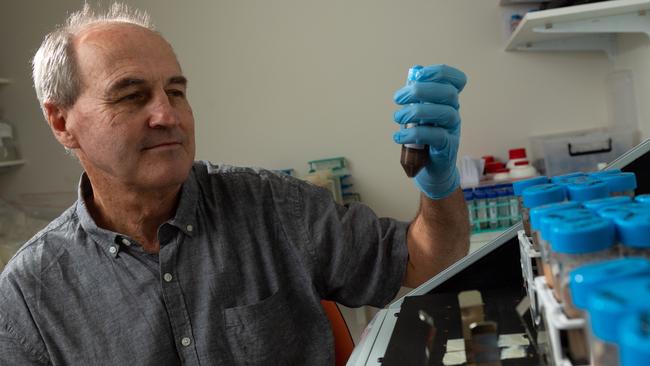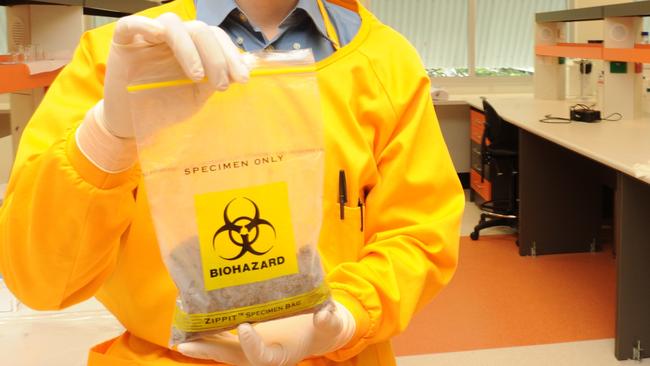Melioidosis cases blow past predictions in Top End, killing two so far this wet season
Cases of a deadly bacterial infection have surged in the Top End this wet season, leading health experts to plead for people to take precautions. SEE THE FIGURES.
Northern Territory
Don't miss out on the headlines from Northern Territory. Followed categories will be added to My News.
CASES of the fatal Nightcliff Gardener’s Disease, or melioidosis, have blown past predictions so far this wet season and claimed as many lives as Covid-19 in the NT.
There have been 23 cases of the bacterial infection in the Top End so far this Wet, which is eight more cases than predicted at this stage in the season.
Two people have died in the Territory from the illness, as many as from Covid-19.
Melioidosis infections, which on average have a five to 10 per cent fatality rate, are adding extra pressure to an already beleaguered health system.
Royal Darwin Hospital and Menzies School of Health Research infectious diseases physician Professor Bart Currie said La Nina weather was driving infections, with wetter conditions helping melioidosis to become more abundant in the Top End’s soil.

Prof Currie also warned Territorians that the bacteria had the potential to become airborne, particularly during rainy conditions and when undertaking activities such as high pressure hosing or lawn mowing.
People at the most risk of infection include those with diabetes, heavy alcohol intake, cancer, advanced age, kidney and lung disease, and drugs used to treat cancer and long term steroid therapy can also impair the immune system.
“We suggest do not go outside if you’re in one of those risk groups because breathing in melioidosis is something that increasingly we’re recognising happens and leads to more severe disease,” Prof Currie said.
He said around a quarter of infections ended up in intensive care units (ICU).
The surge in infections this Wet follows a very low number of cases in 2020-21, because melioidosis bacteria populations had been wiped out from previous years of failed wet seasons.
“From October 1, 2020, to September 30, 2021, we had 31 cases and three fatalities last year,” Prof Currie said.
“What’s happened is, is that last year, despite the rainfall picking up again, there were still relatively few cases compared with historically.
“But this year, having had a year before where the environment has sort of been recharged with water and bacteria, it was just sort of waiting for the rain to happen.”

Prof Currie said while mortality rates from the bacterial infection have fallen in recent years, a small minority of recovered cases may be left with “residual disability”.
“There are rare components of melioidosis or rare aspects that can lead to permanent disability, such as occasionally it can affect the spinal cord or the brain.”
Symptoms of melioidosis include fever, cough, shortness of breath, weight loss, fatigue, abdominal pain, urinary symptoms and occasionally a headache and confusion.
Mortality from the disease has fallen in the past 30 years.





